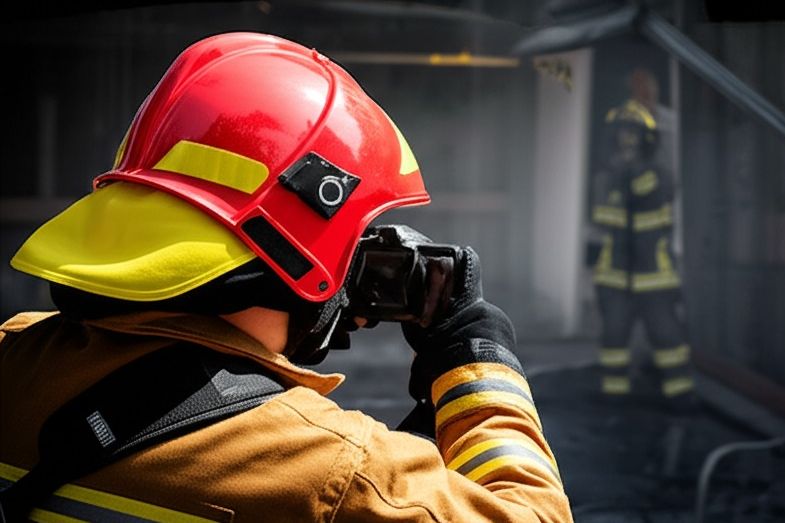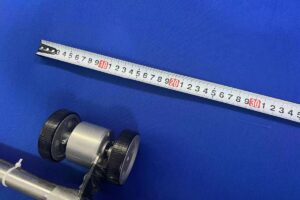Flame retardant fabrics play a crucial role in ensuring safety and protection in high-risk industries, from firefighting to oil and gas operations. For garment makers, distributors, and protective wear brands seeking to produce or supply protective clothing, understanding the properties, applications, and best practices for flame retardant fabrics is essential.
Whether you’re aiming to meet safety standards, source the optimal fabric, or stay on top of emerging technologies in protective wear, this guide will cover all you need to know about flame retardant fabrics for personal protective clothing.
What Are Flame Retardant Fabrics and How Do They Work?
Flame retardant fabrics are specifically designed to resist ignition and limit the spread of flames. These fabrics can either be inherently flame-resistant or treated with special chemicals to enhance their protective properties.
- Inherent FR Fabrics: Made from fibers like aramid or mod-acrylic, these have permanent FR properties that don’t wash out, ensuring long-term reliability.
- Treated FR Fabrics: Often cotton or rich cotton(cotton/polyester blend) treated with chemicals, these may lose FR properties over time or with improper washing, requiring careful maintenance.
When exposed to flame or high heat, flame retardant fabrics react by creating a charred barrier. This barrier reduces heat transfer, slows the spread of flames, and provides critical time for workers to escape hazardous environments.
Here’s some facts mentioned by industrial expert:
Historical data shows that the use of flame retardants in materials like furniture has significantly reduced fire-related fatalities and injuries. For example, regulations in the UK led to the saving of over 1,150 lives and prevention of 13,442 injuries between 1988 and 2002 – White paper written by Alun Morgan, Isola Group
More than 2,000 people are admitted to burn centers annually with severe arc flash burns. Every single day in the United States, an arc flash explosion occurs in electrical equipment that sends a victim to a burn center. – OH&S By Mark Saner May 01, 2011
FAQ:
What’s the difference between flame retardant and flame resistant fabrics?
Flame retardant fabrics get treated to slow fire, while flame resistant ones (like inherent fabrics) naturally resist burning—pretty neat distinction!
Which one is better?
The answer is not simple, it depends on your specific needs, but overall, inherent FR fabric is generally the superior choice for most long-term and high-risk situations due to its permanent protection, durability, and safety advantages.
Types of Flame Retardant Fabrics for Personal Protective Clothing
Choosing the right flame retardant fabric depends on the intended application. Here are some commonly used types:
- Aramid Fabrics (e.g., Nomex): Known for their durability, these inherently flame-resistant fabrics are common in firefighter uniforms and military gear.
- Modacrylic Fabrics: A lightweight, soft, and inherently flame-resistant option, often combined with other fibers for enhanced comfort, strength and thermal performance.
- Treated Cotton or rich Cotton: Affordable and breathable, cotton fabrics treated with flame-retardant chemicals are ideal for industrial uniforms and casual protective gear.
- Wool Blends: Wool is naturally more flame-resistant than standard synthetic fibers, and blends are often used to balance comfort and thermal protection.Applications such as molten metal splash protection in metal and steel industries.
Standards and Regulations for Flame Retardant Clothing
To ensure workplace safety and compliance, flame retardant clothing must meet specific international standards:
- NFPA 2112 (US)
Designed for flame-resistant garments that protect industrial personnel from flash fires, which are short, intense fires often encountered in sectors like petrochemicals and oil and gas. It sets minimum performance requirements and testing methods to reduce burn injuries from such exposures.
- ISO 11612 (Europe & Global)
Formally known as “Protective clothing — Clothing to protect against heat and flame — Minimum performance requirements,” is designed to safeguard workers from heat and flame hazards in various industries.
- ASTM F1506 (US)
standard that outlines the necessary performance for protective clothing worn by electrical workers. It ensures the clothing can resist flames and has an adequate arc rating to protect against thermal hazards from electric arcs. This is crucial for workers in environments where electrical work might lead to arc flash incidents.
Why Do These Rules Matter?
Fire hazards in the workplace are a top concern, with over 5,000 non-fatal work-related burn injuries reported annually in the US alone. Meeting regulations not only ensures worker safety but also protects your business from costly penalties and legal liabilities.
Quick Comparison Table:
| Aspect | ASTM F1506 | NFPA 2112 | EN 11612 |
| Primary Focus | Electric arc and flame hazards for electrical workers | Flash fire hazards for industrial personnel | Heat and flame hazards, general industrial use |
| Industries | Electrical utilities, power generation | Petrochemical, oil and gas, well-servicing | Foundries, petrochemicals, metalworking |
| Key Testing | Arc rating via ASTM F1959, flammability test via ASTM D6413 | Manikin test ASTM F1930, TPP values, flammability test ASTM D6413 | Flame spread (ISO 15025), radiant/convective heat, molten metal |
| Labeling Requirements | CAT – Arc rating category, tracking code, manufacturer details | Manufacturer details, care instructions, compliance statement | Codes like A1, B1, C1, indicating test levels |
| Exclusions | Rainwear, hand protection, care/maintenance | Not specified, focuses on garment design/certification | Hand protection, visors, respiratory equipment |
Businesses must ensure that their flame retardant fabrics and garments comply with applicable standards based on the intended market and industry.
How WOKI Keeps You Safe
We don’t just meet standards – we exceed them. Our fabrics are designed with real-world dangers in mind, giving your business peace of mind.
Applications in High-Risk Industries
Flame retardant clothing is vital in industries where workers face exposure to flames, extreme heat, or hazardous conditions. Key sectors include:
- Fire Service
Firefighters rely on flame-resistant uniforms that ensure both thermal protection and mobility.
- Oil & Gas
Workers are safeguarded from flash fires and heat hazards during onshore and offshore operations.
- Metal & Steel Handling
Fabrics with molten metal splash protection are essential for workers in foundries and smelting plants.
- Utilities and Electrical Work
Protects personnel from arc flash hazards and thermal risks.
- Military
Combat uniforms and gear with FR properties protect military personnel in high-risk environments.
Further applications include electricity generation, chemical processing plants, military services, industrial cleaning services, and more. As technology evolves, flame retardant fabrics continue to find uses in new industries.
How to Choose the Right Flame Retardant Fabric
Selecting the appropriate flame retardant material requires a balance of protection, comfort, and compliance. Here are the key considerations:
- Hazard Assessment
Analyze the specific risks workers face in their roles—e.g., flash fires, molten metal splashes, or arc flashes.
- Compliance with Standards
Ensure the selected material meets regional and industry-specific safety regulations. Like NFPA 2112 or EN 11612
- Durability and Longevity
Consider fabrics designed to withstand repeated laundering and wear without degrading their protective properties.
- Comfort and Fit
Lightweight, breathable fabrics ensure workers remain comfortable during long shifts.
- Customization Options
Work with manufacturers like WOKI FR Fabrics for tailored solutions that align with specific hazards and brand requirements.
The right fabric balances safety, comfort, and compliance while meeting the demands of your target audience.
QuickTips:
How much danger are you facing? If fire’s around all the time (like for firefighters), pick inherent fabrics like nomex(aramid). They’re made to fight fire forever. If it’s just sometimes and needs to be replaced in a short period (like oil, gas, mining), treated fabrics like cotton or CVC are cheaper and still work great.
WOKI’s Custom Solutions:
We don’t just sell fabrics—we make them fit your needs! Whether it’s for welders or soldiers, WOKI helps you find the perfect match.
Maintaining and Caring for Flame Retardant Clothing
Proper care is essential to maintaining the effectiveness of flame retardant fabrics. Follow these steps to extend the lifespan and functionality of protective clothing:
- Avoid Harsh Chemicals
Do not use bleach or fabric softeners, as they may degrade the flame-resistant properties.
- Follow Manufacturer Guidelines
Refer to washing and maintenance instructions provided by the fabric or garment manufacturer.
- Inspect Regularly
Check for signs of wear, tears, or contamination that could compromise protection.
- Replace When Necessary
It’s important to replace garments once their effectiveness is reduced due to wear or damage.
Emerging Trends in Flame Retardant Technology
The field of flame retardant fabrics is witnessing exciting advancements that are shaping the future of protective clothing:
- Eco-Friendly Innovations
The focus on sustainability has led to the development of eco-friendly flame retardant treatments and recyclable fabrics.
- Smart Fabrics
Technologies like heat sensors and conductive materials are being integrated into protective clothing for real-time hazard detection.
- Enhanced Comfort
Innovations in fabric blends aim to improve comfort without sacrificing protection, meeting the demands of modern industries.
- Circular Design Practices
Companies like WOKI FR Fabrics are adopting circular approaches, emphasizing materials that can be recycled at the end of their life cycle.
Partner with WOKI FR Fabrics for Superior Protective Solutions
As a leading manufacturer of inherently flame-resistant fabrics, WOKI FR Fabrics understands the unique challenges faced by garment makers, distributors, and protective wear brands. With over a decade of experience, we offer tailored solutions designed to meet the specific needs of high-risk industries.
Why WOKI FR Fabrics?
- Expertly crafted protective fabrics that balance safety, comfort, and compliance.
- Customized solutions for specialized applications.
- A commitment to sustainable practices and superior quality.
Whether you’re looking for advanced flame-resistant fabrics or guidance on creating protective clothing, WOKI FR Fabrics is here to help. Get in touch with our specialists to learn how we can support your business with next-generation fabrics.
FAQ:
How do I know if a fabric is flame retardant?
To determine if a fabric is flame retardant, you can check the product label or manufacturer information, which should indicate whether the fabric has been treated with flame-retardant chemicals. Additionally, flame retardant fabrics often comply with specific safety standards or certifications, such as NFPA 701 or other regional guidelines, so look for these markings as confirmation. If you’re unsure, contacting the manufacturer directly is the best way to verify the fabric’s flame-retardant properties.
Are there any health risks associated with flame retardant fabrics?
While flame-retardant fabrics provide important protection against fire hazards, there can be potential health risks associated with certain chemicals used in the production of these materials.
Some flame retardant chemicals, such as halogenated compounds, have been linked to health concerns like skin irritation, respiratory issues, or, in long-term exposure, more serious conditions such as hormone disruption or carcinogenic effects.
However, many manufacturers are now using safer, non-toxic alternatives to minimize these risks. It is important to research the specific type of flame-retardant fabric and the chemicals used in its treatment, particularly if the clothing will be worn frequently or in close contact with skin.
Quick Tips:
Well-established manufacturers and suppliers that prioritize safety and transparency in their production processes. Reputable brands are more likely to use non-toxic, sustainable flame-retardant treatments.







